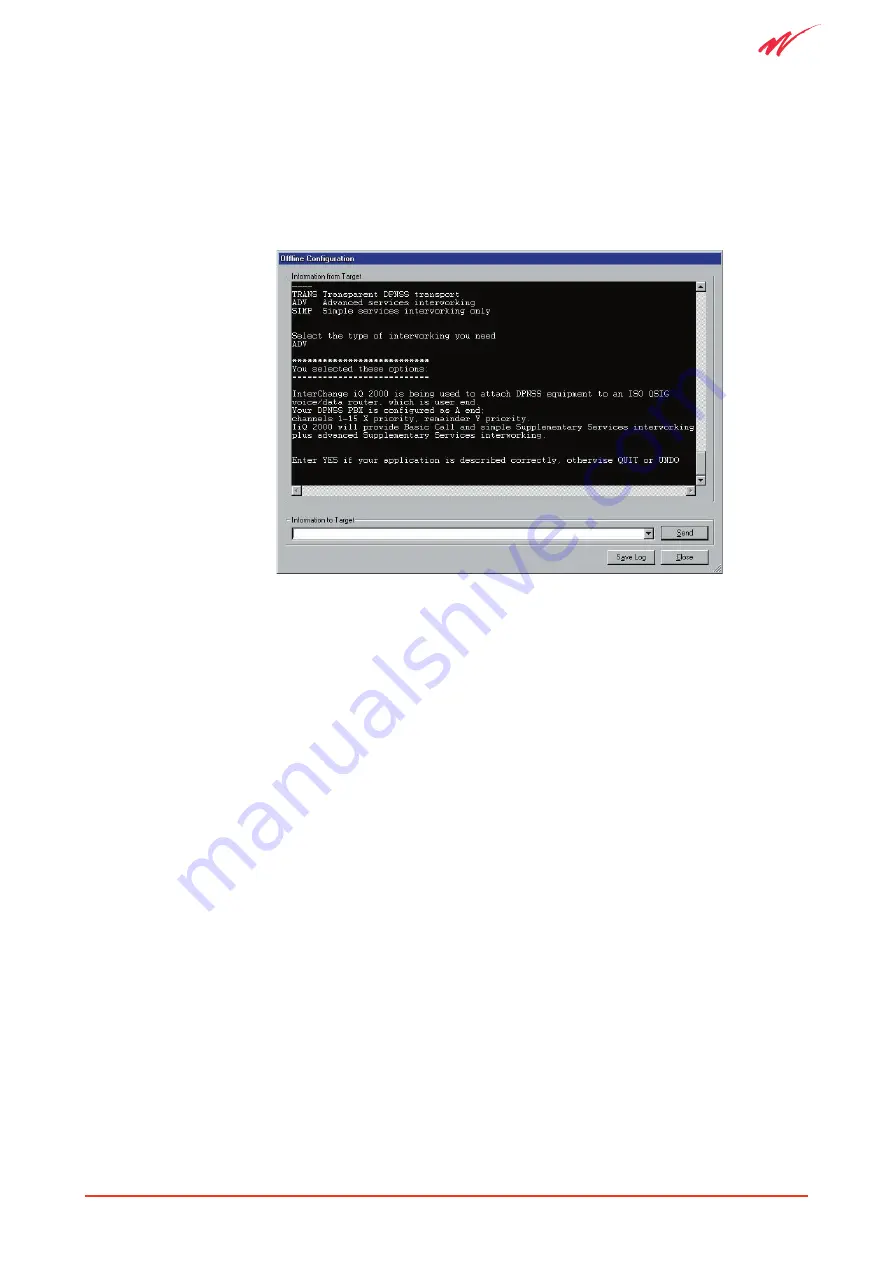
UM380 03 010
41
Management using Vision iQ
However, if the message arrives at a QSIG PBX it will be treated as a simple call, and no
extensions will be understood. To get a system to interwork between DPNSS and QSIG
PBXs you will need to select
ADV
, which will provide an advanced service interworking.
Here DPNSS signalling is attempted to be mapped into a QSIG equivalent and vice versa. If
all you need is for the ability to make calls, select
SIMP
. This will perform a basic translation
of the normal call services. For further discussion on Transparency and Conversion, see
Section 5
. For demonstration purposes,
ADV
is selected.
Figure 38: Quick Start System Screen 8.
If you selected
ADV
there is one further detailed technical question to answer:
You have selected full (advanced) interworking.
InterChange iQ 2000 can occasionally persuade the network to achieve more
effective call routing by issuing a 'ROP-INV' request to the DPNSS PBX.
ROP-INV was a late addition to the DPNSS specification, so not all DPNSS
PBXs support this request and it can prevent some of those PBXs from
achieving correct Route Optimisation. You may need to ask your PBX
supplier, or experiment to determine whether your PBX accepts this string.
If not, you must answer NO, but if it does, we recommend you answer YES.
Do(es) the DPNSS PBX(s) attached via this unit support ROP-INV?
No calls will fail, whichever way you answer this question. But if you are in any doubt about
the ability of your DPNSS PBX(s) to handle ROP-INV you should answer
NO
, because
correctly operating Route Optimisation without ROP-INV is better than incorrect operation if
the PBX does object to InterChange’s use of this signalling.
The Quick Start system has now discovered everything it needs to configure the unit, but
before continuing, it confirms the choices that have been made. If you wish to amend your
selections, either enter
UNDO
to go back a question, or
NO
to restart the Quick Start system.
If happy with the answers given, select
YES
.
















































